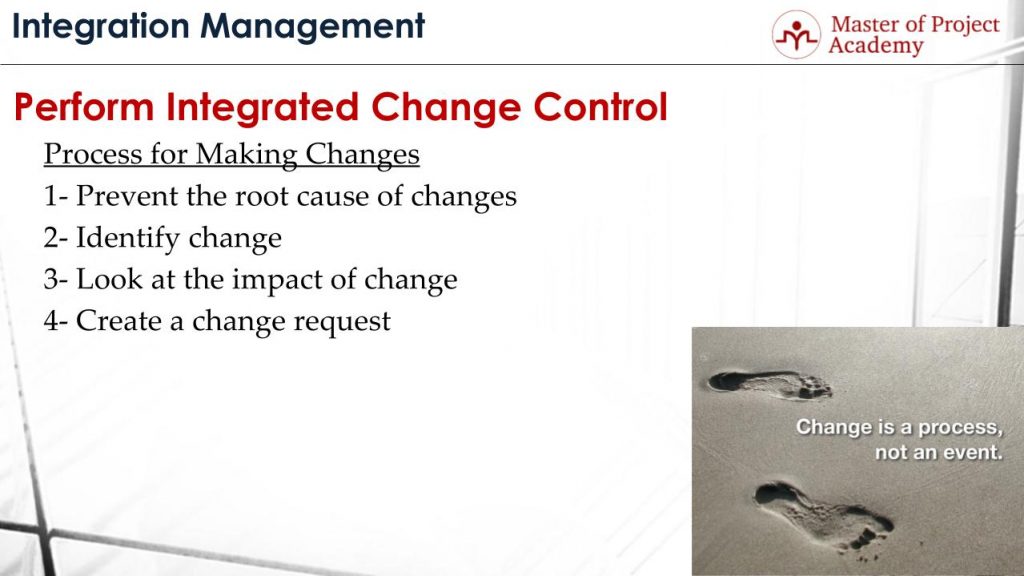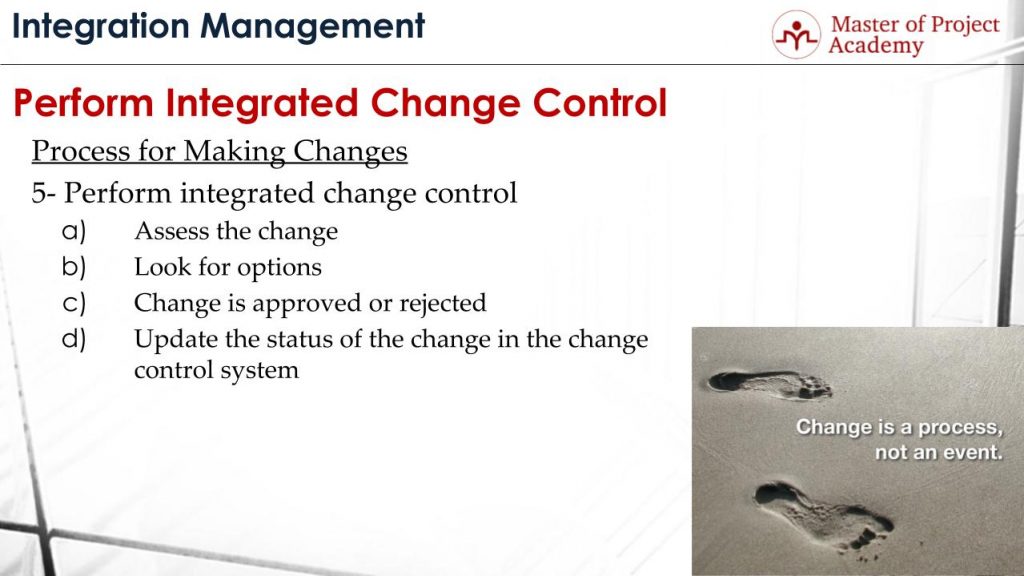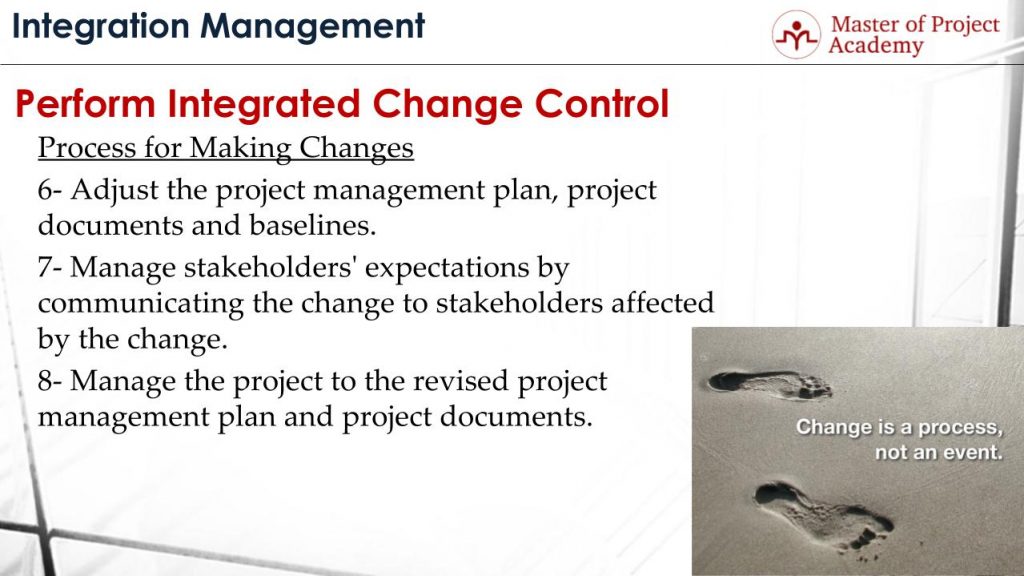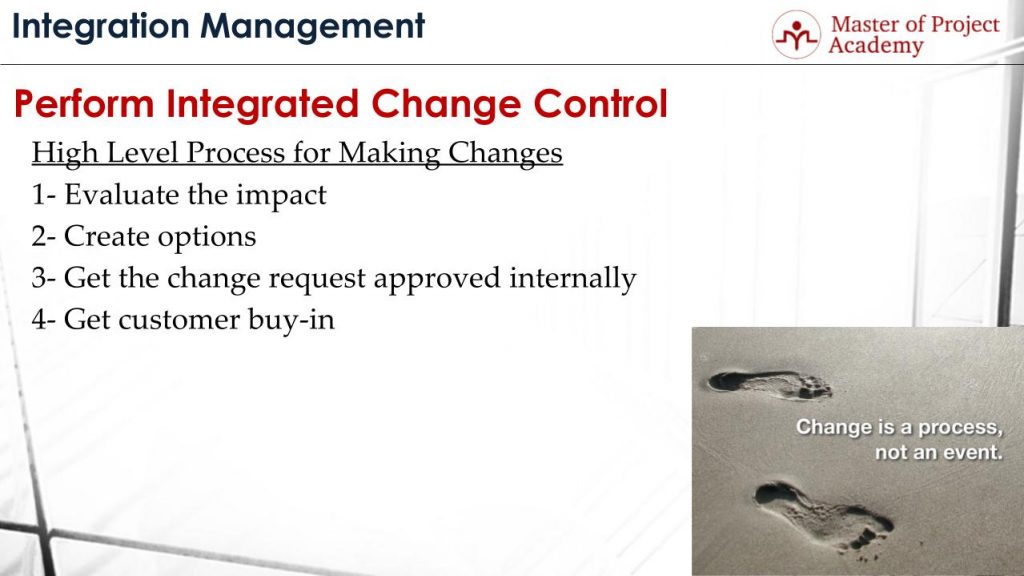Changes are inevitable in the project life cycle. But if they are not managed properly, they will create risks that will lead the project to failure. So the changes in a project must be assessed, evaluated and implemented through a set of structured and planned activities. And, this is the scope of the change management process, which is an important aspect of project management. There are 8 major steps of change management in a project. In this article, we are going to review each of these 8 steps, and also summarize this important processes in 4 steps, to make them easier to learn and remember.
Attend our 100% Online & Self-Paced One-Hour Free PMP Training.
To learn more about the change management, which is part of the project integration management, consider enrolling in a PMP course which will guide you through all the project management knowledge areas.
What are the 8 Steps of Change Management?
Now, let’s go over these 8 change management steps one-by-one:

Prevent the root cause of changes:
The first step of change management is the action that must be taken against changes is the prevention of them. Because too many changes cause too much planning, management and coordination issues, demotivation of the project team members etc. Therefore, the root cause of the changes must be eliminated in the change management of a project.
Identify the change:
Although you take all preventive actions, it is inevitable that your project will receive changes. So in change management, once the change is received it must be identified. Identification includes what is the reason of the change, what is the aim of the change, who initiates the change etc.
Evaluate the impacts:
After the change is identified, the impacts of the change are evaluated in change management. These impacts include both to the product of the project and also to the project performance. For instance, change in an existing requirement of a project might bring additional features to the end product. But, it might require $100,000 additional cost and 2 months’ development time. These kinds of impacts should be analyzed in change management.
Submit the change request:
After the change impact analysis, the change request is submitted. The change request is submitted once identification and impact analysis is finished. Actually, in change management, the change request submission authorizes a change officially.

Perform integrated change control:
Perform integrated change control process belongs to the project monitoring and control phase of the project integration management processes. After a change is requested officially, during the change management, this process ensures successful analysis of the change, evaluation and if it is approved, implementation respectively.
There are 4 steps of performing integrated change control process.
- Assess the change: The origin of the change request, the scope of the change and the main purpose of change are analyzed. Impacts of the change are evaluated.
- Identify the options for implementing the change: There can be different alternatives to implement a change request. These alternatives include alternatives from technical and project management point of you. The main reason of this is, finding the best implementation option that will impact the project least.
- Approve or reject the change: Impacts of the change are analyzed by the change control board and options to implement the change are reviewed. Based on the evaluation of change control board, change is either rejected or approved. Only approved change requests are progressed further to implement.
- Record the change in the change control system: By this way, evaluation history of a former change request can be seen in future.
Adjust the project management plan, project documents, and baselines:
Please note that 6th, 7th and 8th steps of the change management are executed only if the change is approved by the change control board. If a change is approved, impacts of this change are updated in the project management plan, project documents, and project baselines. For instance, if an additional $100,000 and 2 months’ development time is required, these are updated in the project baseline.

Manage stakeholders’ expectations:
This step of the change management can be done by communicating the change to stakeholders who’ll be affected by the change. An approved change will affect the product of the project, time plan, cost plan etc. Therefore, the impacts of the change and new objectives of the project must be communicated to the stakeholders appropriately after a change is approved and plans have been revised accordingly.
Manage the project to the revised project management plan and project documents:
This is the last step of change management. After the plans are revised to cover the implementation of the change, the new revised plan is executed. This will ensure the successful implementation of the change as well.

A summary in 4 steps
Remembering the 8 steps for making a change might be hard. Therefore, we created a list with 4 steps, that describes the change management processes.
- The first step of change management is evaluating the impact. When a change is received, how it affects the scope, product, cost, schedule etc. must be evaluated.
- Then in the second step of change management, the options must be created. Several alternatives to implement the change must be assessed. This is important to identify the least affecting implementation option.

- After the evaluation of the change, impacts, and alternatives to implement, change control board either accepts or rejects a change. Only approved change requests can be applied in the change management of a project.
- And the final step of the change management is Get customer buy-in. Changes will affect the final project product, budget, schedule etc. These updates in the project must be communicated to the project stakeholders respectively. Because knowing the up-to-date objectives of the project is a crucial success factor.
Knowing how to conduct a good change management is crucial for the project’s successful outcomes, that’s why it is an important part of the PMP exam. You can assess your knowledge by using a PMP exam simulator, or you can improve your skills by taking an online PMP course.


